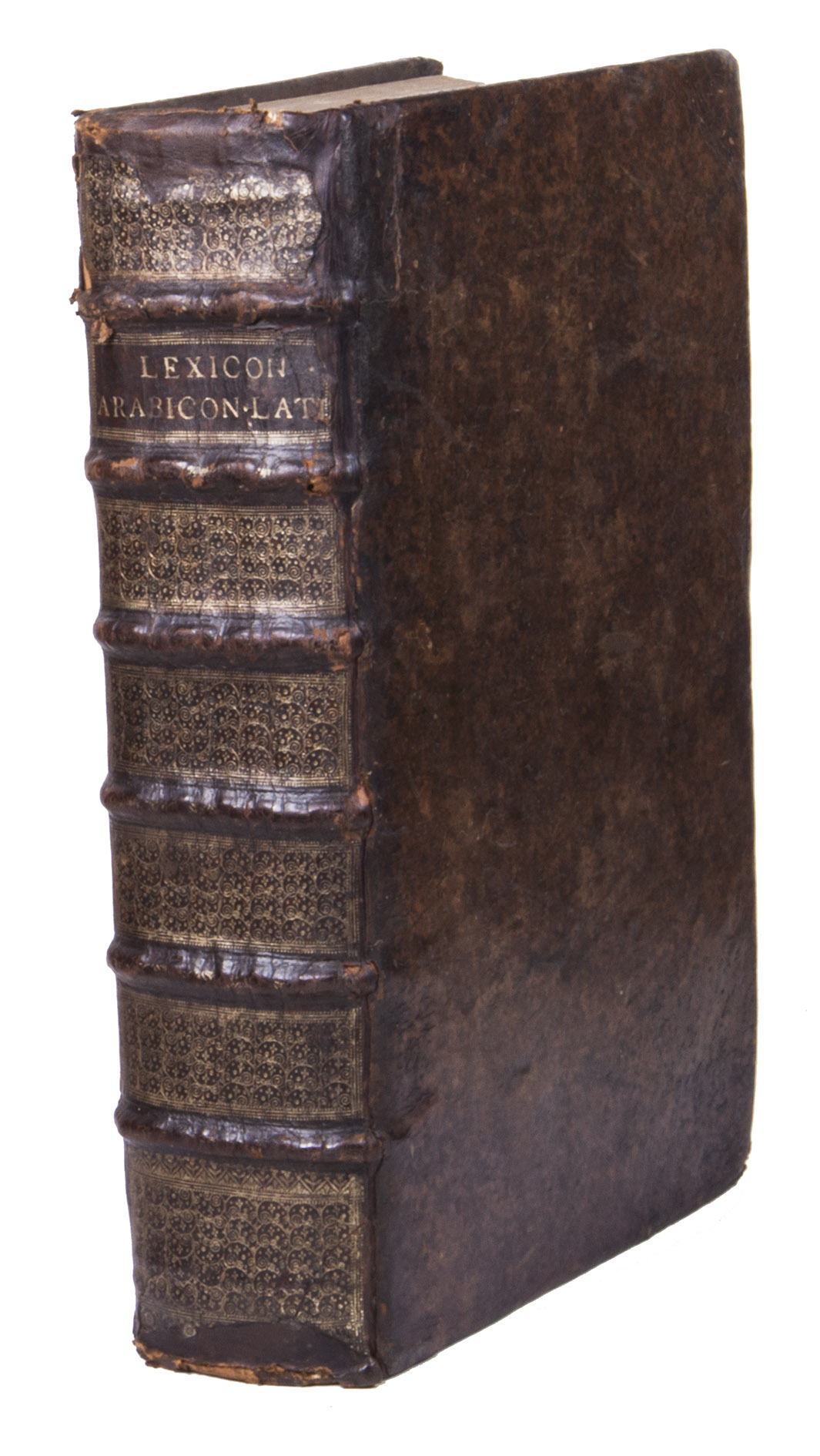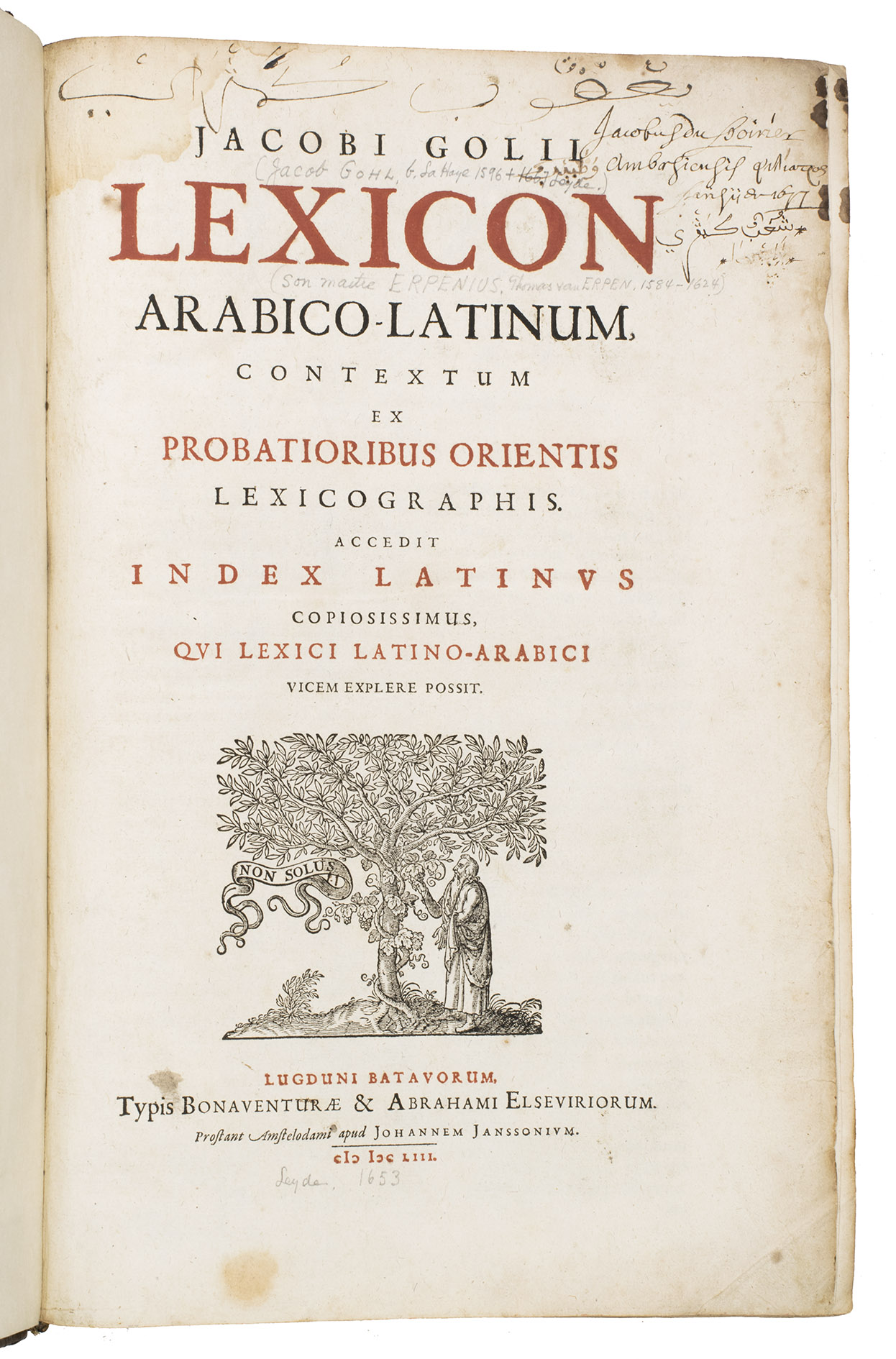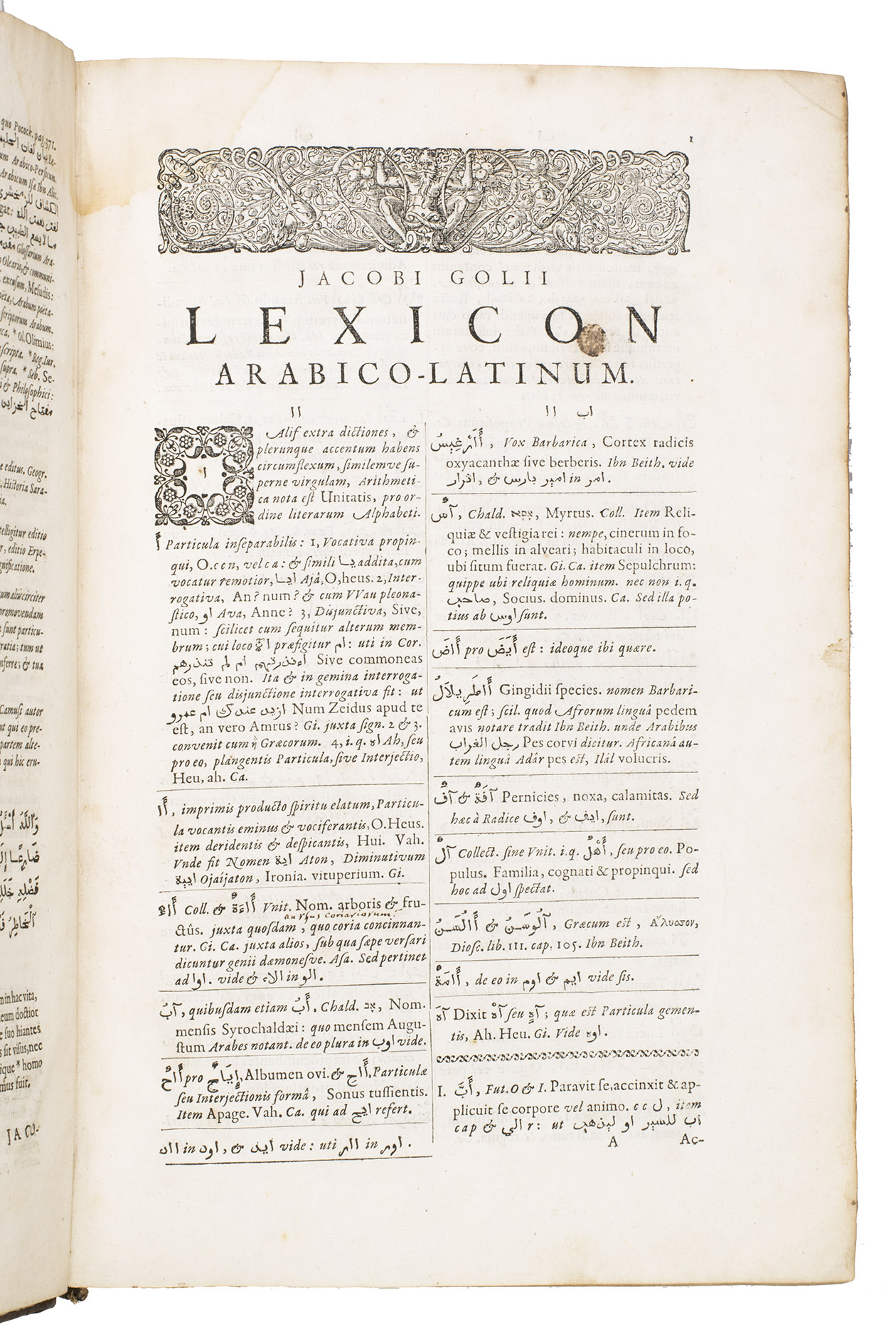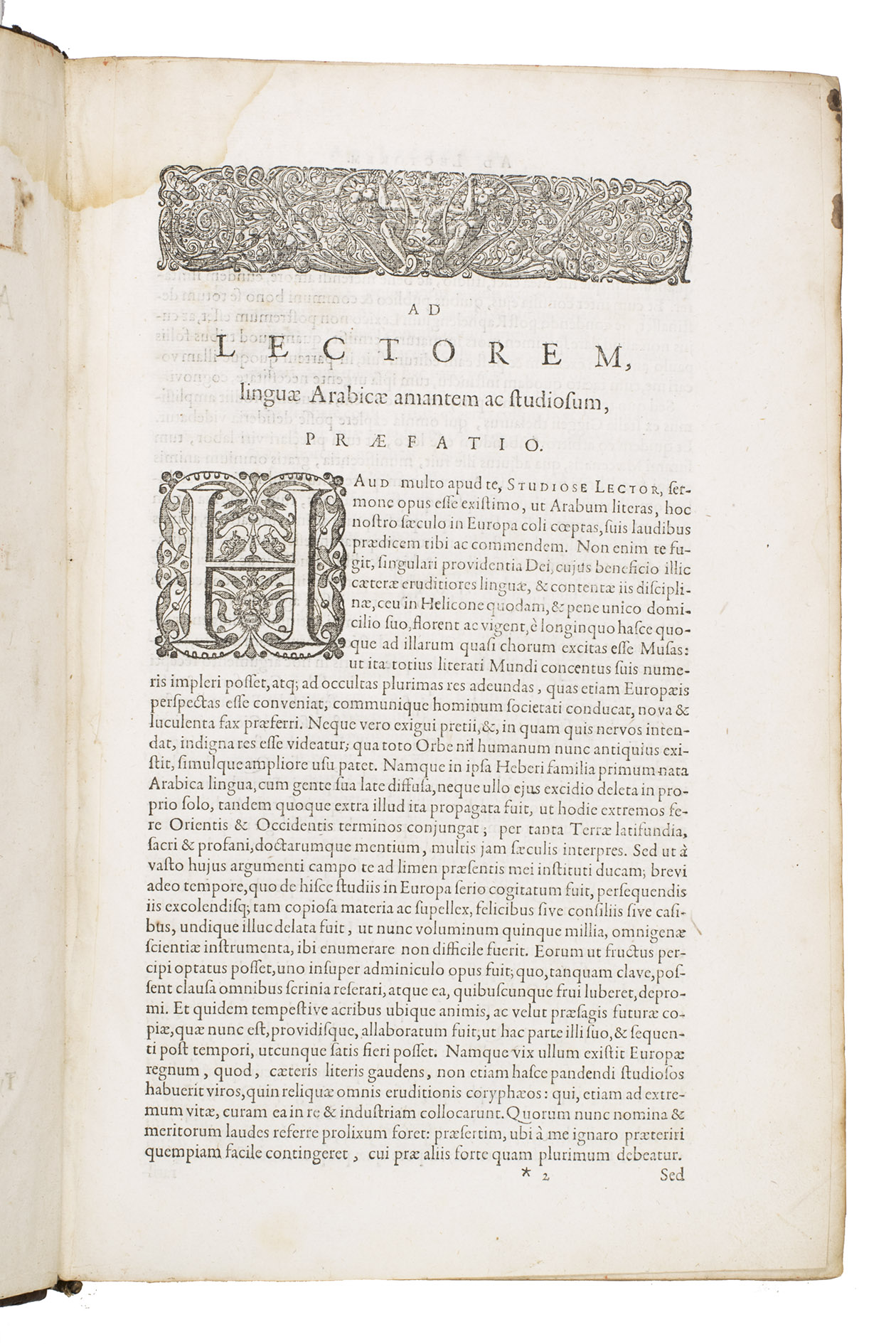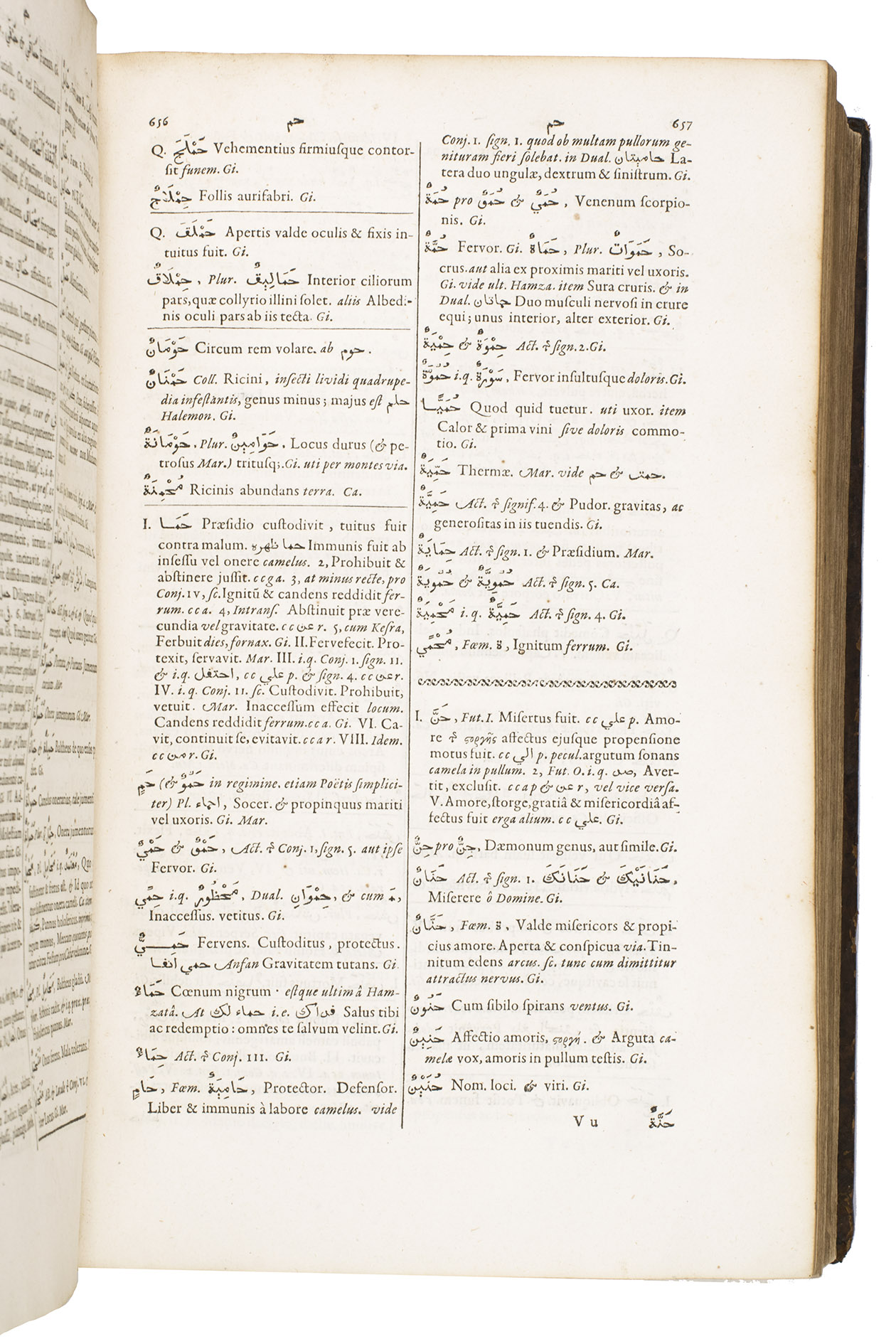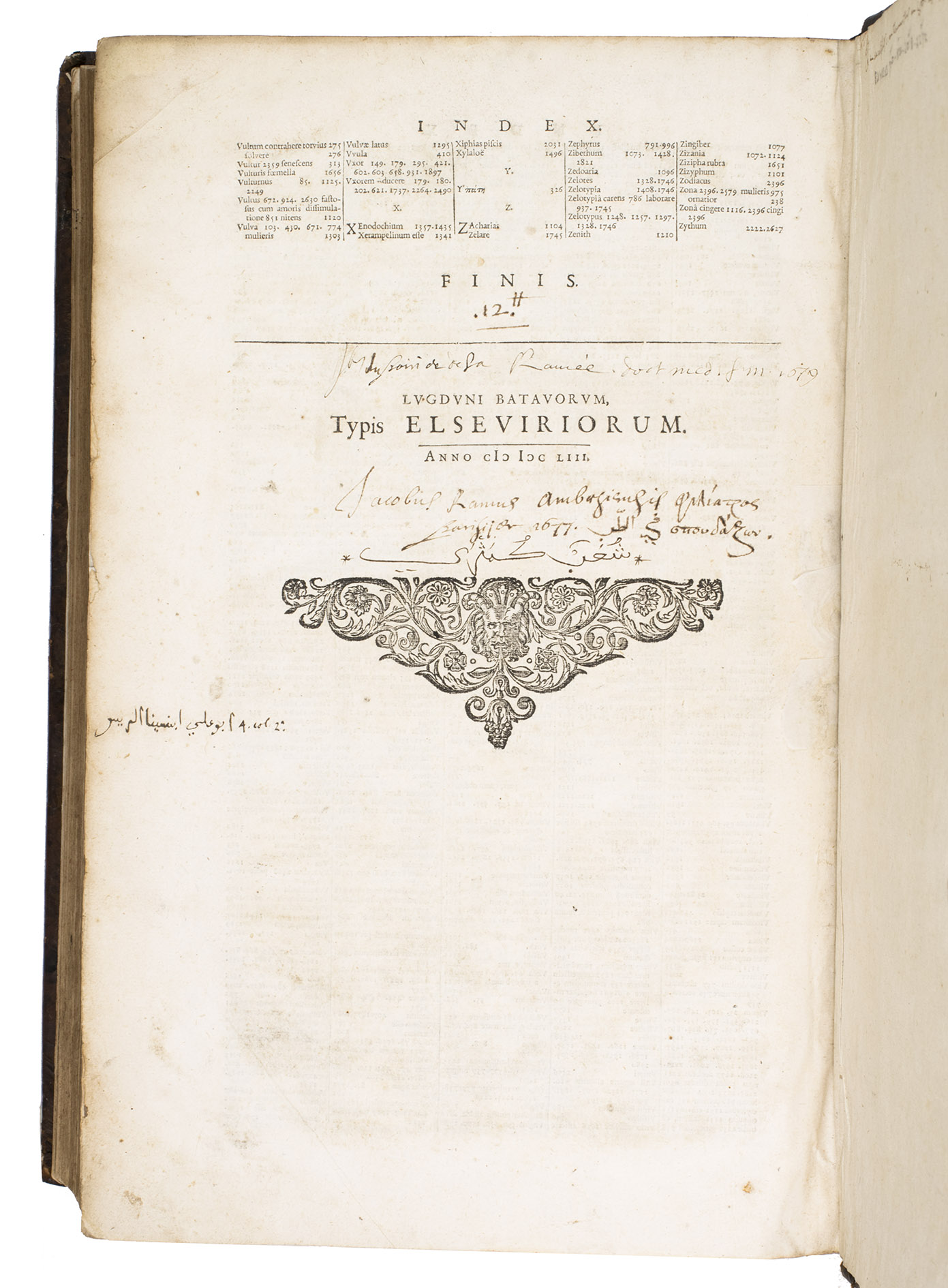GOLIUS, Jacobus.
Lexicon Arabico-Latinum, contextum ex probatioribus orientis lexicographis. Accedit index Latinus copiosissimus, qui lexici Latino-Arabici vicem explere possit.
Leiden and Amsterdam, Bonaventura & Abraham Elsevier [= Johannes & Daniël Elsevier] and Johannes Janssonius, 1653. Folio (36 x 23.5 cm). With a large publisher's device on the title-page, the title-page is printed in red and black. The text is set in roman and Arabic type in two columns per page. Further with woodcut decorated initials and woodcut decorated head- and tailpieces. Contemporary mottled calf with the title lettered in gold on the gold-tooled spine. [1], [1 blank], [10], 16 pp.; 17-"2922" cols. [= 17-2920 cols. = 1452 pp.]; 40 pp.
€ 6,500
First edition - the Elzevier and Janssonius issue - of Golius's ground-breaking Arabic lexicon, which remained the most important dictionary in European Arabic studies until Freytag's dictionary appeared in the 1830s. Golius based his dictionary on a variety of Arabic lexicographical texts, the most important being al-Jawhari's Sahah and Firuzabadi's Qamus, but he also used geographical and zoological sources such as al-Damiri's book on animals. His dictionary included, moreover, Arabic words derived from other languages, most notably Turkish and Persian, which he translated directly from the source language, using Turkish and Persian glossaries. The work concludes with an extensive index, containing some 10,000 entries. "The manner in which Golius arranged his dictionary, according to the Arabic root letter and the verbal and substantival forms with all their derivates, is still the fundamental criterion of Arabic dictionaries in European languages" (Vrolijk & Van Leeuwen). The book was produced in four simultaneous issues, differing only in the imprint, all noting Bonaventura and Abraham Elzevier as printers (the colophon also noting the Elzeviers as printers), one apparently for their own distribution and others noting the book's sale by Johannes van Ravesteyn in Amsterdam or Arnout Leers in Rotterdam rather than the present Johannes Janssonius. It was for a long time the best resource we had on the Arabic language (Willems 723).
With an owner's inscription on the title-page ("Jacobus du Poirier Ambosiensis [Greek text] Parisii .. 1677 [Arabic text]") and around the colophon (above: "J.bs. du poirier de la Ramée. doct. med. fm. 1679" and below: "Jacobus Ramus Ambaesiensis [Greek text] Parisii .. 1677. [Arabic text]" and some Arabic text further below): from the library of Jacques du Poirier de la Ramée, a French doctor and scholar from Tours . Further with a manuscript inscription on the recto of the final black flyleaf, and occasional manuscript annotations in Arabic, Latin, and Greek in the margins, probably by Jacques du Poirier de la Ramée. The spine and corners of the boards show some signs of wear (with some minor loss of material) and the joints are slightly weakened, the front free flyleaf is modern, some occasional foxing, a small water stain in the top inner corner of the leaves, some occasional very small ink stains in the margins. Otherwise in good condition. De Nave 91; Rahir, Les Elzeviers, 723; Schnurrer 79; Smitkamp, Philologia orientalis 314; STCN 117768960 (8 copies, including 1 incomplete); Vrolijk & Van Leeuwen, Arabic studies in the Netherlands, pp. 47-48; Willems, Les Elzevier, 723; cf. for Jacques du Poivier de la Ramée see: Jean-Luc Deuffic, "Jacques du Poirier, doctor in Tours, bibliophile and erudite Hellenist" (online 26 September 2011, https://pecia.blog.tudchentil.org/2011/09/26/jacques-du-poirier-medecin-a-tours-bibliophile-et-helleniste-erudit/).
Related Subjects:
